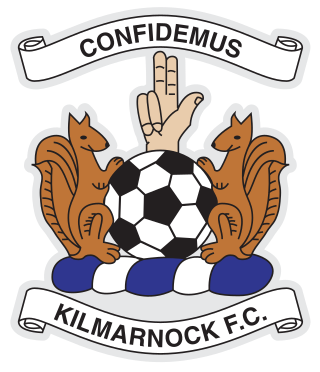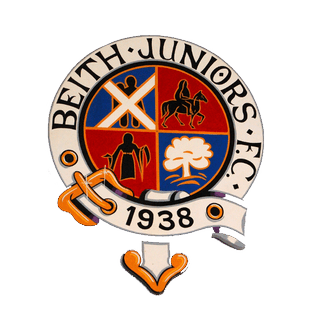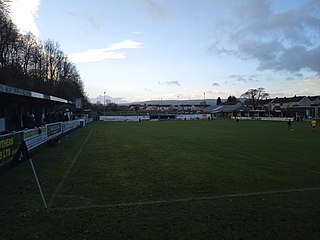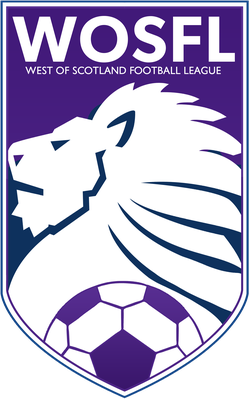
Kilmarnock Football Club, commonly known as Killie, is a Scottish professional football team based in the town of Kilmarnock, East Ayrshire. The team is currently managed by Derek McInnes, who was appointed in January 2022. The club has achieved several honours since its formation in 1869, most recently the 2011–12 Scottish League Cup after a 1–0 win over Celtic at Hampden Park and the Scottish Championship title in 2022. The club nickname, Killie, is the Scottish term for the town of Kilmarnock.

Beith Juniors Football Club are a Scottish football club from the town of Beith, North Ayrshire. Members of the Scottish Junior Football Association, they compete in the West of Scotland Football League. Beith play at Bellsdale Park. Their main rival is Kilbirnie Ladeside.

Vale of Leven Football Club is a Scottish football club based in the town of Alexandria, in the Vale of Leven area of West Dunbartonshire. Nicknamed the Vale and formed in 1939, they play at Millburn Park. They play in the West of Scotland League Third Division, the ninth tier of Scottish football.
The Scottish Football Alliance was a league football structure set up in Scotland in competition with the Scottish Football League. Its success in the early years of professional football in both England and Scotland made the Alliance the basis for a second division in both countries. The Alliance attracted a number of Junior clubs to the League system, which boosted its future viability.
Ayrshire Football League is a defunct soccer league in Scotland.
Andrew Cunningham was a Scottish football player and manager. He played for Kilmarnock, Rangers, Newcastle United and Scotland; his position was inside forward.
Lochgelly United Football Club was a football club based in Lochgelly, Scotland. Nicknamed the 'Happylanders', the club were members of the Scottish Football League between 1914 and 1926.
Beith Football Club were a football club based at Bellsdale Park in Beith, Scotland. The club were members of the Scottish Football League from 1923 to 1926.
The Ayrshire Cup was an annual association football regional competition in Scotland. The cup competition was a knockout tournament between football clubs in the historic county of Ayrshire. The Ayrshire Cup was first held in 1877–78, the trophy being a solid silver vase, 30 inches high, and valued at £100, designed by Messrs John Cameron & Son. The first winners were Mauchline.
Coylton Coila Football Club was a Scottish association football club based in the village of Coylton, Ayrshire.
Portland Park was a football ground in Galston, Scotland. It was the home ground of Galston F.C.

Bellsdale Park is a football ground in Beith, Scotland. It was the home ground of Beith F.C. during their time in the Scottish Football League, and is currently the home ground of Beith Juniors.
The West of Scotland Junior Challenge Cup was an annual Scottish football competition played in a one-leg knockout format, organised by the West Region of the Scottish Junior Football Association.

The West of Scotland Football League (WoSFL) is a senior football league based in the west of Scotland. The league sits at levels 6–10 on the Scottish football league system, acting as a feeder to the Lowland Football League.
Annbank Football Club was a football club that existed from 1879 to 1920, from the village of Annbank, Ayrshire, Scotland.
Hurlford Football Club was a football club that existed from 1875 to 1924, from the village of Hurlford, Ayrshire, Scotland.
Stevenston United Football Club was a football club from the town of Stevenston, Ayrshire, Scotland. The club only lasted for a decade, but once reached the quarter-finals of the Scottish Cup.
Ayr Athletic Football Club was an association football club from Ayr, Ayrshire, Scotland.
Beith Thistle F.C. was an association football club from the town of Beith in Ayrshire.




